Anti-fungal effect of whole grain corn meal
strawchicago z5
10 years ago
Featured Answer
Sort by:Oldest
Comments (14)
strawchicago z5
10 years agostrawchicago z5
10 years agoRelated Discussions
Corn meal as organic fertilizer-how to apply?
Comments (20)I hope everyone realizes that the protein in 5 pounds of grass (12%) equals the amount of protein in one pound of cornmeal (65%) One inch of grass equal about 200 pounds of dry material per acre. So if you have a quarter acre you are putting 50 pounds of grass clippings or about 6 pounds of protein on your yard each time you cut it. This is much more than you can possibly put on with corn meal. I understand that this is general and will vary some what by the type of grass you have in your yard, but the basic fact remains. The other nutrients that goes back into your yard is a bonus of the grass clippings https://www.anderson-hay.com/blog/nutrition-101-crude-protein https://www.ag.ndsu.edu/publications/livestock/feeding-corn-to-beef-cattle/as1238.pdf https://pasturemap.com/pasture-inventory-estimate-available-dry-matter/ As stated in other post, corn meal by itself has no fungal properties, if it did you would not be eating it. It only support the organism that may prevent the fungus. Also 1 divided by 0 is the mathematical infinity. 0 divided by 1 is 0...See Morecorn gluten meal vs corn meal
Comments (18)Mistina, what are you hoping to accomplish with this mixture? What is it supposed to do? The problem with many of these so called 'natural' or organic home remedies is that they really don't do anything despite being touted for all sorts of magical properties. Corn meal - or even corn gluten meal - really doesn't have significant herbicidal or fungicidal properties. Scientific testing to support any consistent herbicidal properties have not been able tosuccessfully duplicate the results generated by Iowa State University that caused all the hoopla to begin with. And the fungicidal properties simply do not exist. But since CGM is nearly pure protein, it's not at all a bad organic fertilizer (if you overlook the consideration that most feeder corn grown in the US is GMO'd). And Epsom salts (magnesium sulfate) provides absolutely NO benefit to the garden unless you have a magnesium deficiency in your soil. If you want to use any of these or similar organic home remedies for weed control or pest or disease suppression, do some research first before you spend money purchasing these products needlessly. There are numerous websites outlining any scientific testing or investigation into the alleged beneficial properties these products may or may not possess. Look in particular for scientific papers or websites with the .edu suffix. Finally, purchasing food grade equivalents of these products at a grocery store will always be more expensive than buying in bulk from a feed lot source....See MorePics of fungal growth, corn meal, and Austin roses
Comments (25)Hi Mike: Glad to hear from you, I'm too lazy to spray. Fifteen years ago, a neighbor saw me spraying roses with chemicals and told me, "why do you even bother growing roses with all these spraying?" Roses become unpopular when people associate roses with spraying. It's already a nuisance to spray my moldy shower stall with bleach/water solution. The pics I posted are FRESHLY dusted roses BEFORE another 20+ hours of rain. Today the rain washed most of the corn meal away, and the leaves are 100% green and healthy. My 10 Austins keep ALL their leaves green. I went and check the neighbors' disease-resitant roses, like Living Easy, and some single-petal species. They look horrible with yellow leaves after 5 days of constant rain, and no sun. It looks better dusting roses with corn meal using a flour sifter, and much faster than messy spray. My pics look bad because I threw corn meal by hand. The best thing about dusting with corn meal is the prevention of pathogenic fungi from germinating through the winter and inflicting more damage in the spring. It takes 10 days for the beneficial Trichoderma fungi to germinate from corn meal, and to suppress pathogenic fungi. I dusted August 1, September 1, September 17 (after 25+ hours of rain), and when I took the above posted pictures (Wed, Sept.28), after 3 days of rain. I finally see the sun this morning, Friday, Sept.30, after 5 days of constant rain....See MoreGypsum, dolomitic, lime, sulfates vs. buffers and anti-fungal agents
Comments (12)Re-posting what I posted on the other thread: Folks report that Azomite helps to deter pests, it thickens the tissue of plants. Molasses work very well in deepening the blooms' color, but I'm afraid to use it, for fear that would attract pests like rose-slugs. When to use gypsum (calcium sulfate) and when to use dolomitic lime (calcium & magnesium) ? I narrow down to: If the rose blooms profusely, means it's good in acid-phosphatase, and will have excess acid at end-bloom-period. Time for dolomitic lime during profuse-blooming. If the rose is stingy, means it doesn't secrete enough acid to release phosphorus from soil. Time for SOLUBLE gypsum (calcium sulfate, with 17% sulfur). The acid, or sulfur helps to release phosphorus from soil for blooming. The mycorrhyzal fungi that help plants to bloom also prefer slightly acidic. Some disease-resistant roses fall into this category (Home Run, Basyes Blueberry, Duchess de Rohan, some Kordes roses). Folks in alkaline CA complain about Kordes being huge & healthy foliage, but stingy in blooms. Never see a black spot on B.B, but it's stingy unless given soluble fertilizer. Home Run is filled with dark-green foliage, but few blooms. I would rather get the disease-resistance from thick & shiny foliage (FlowerCarpet), than stinginess in blooms (Home Run). If the rose is wimpy, SOLUBLE gypsum and sulfate of potash help. Buffers are alkaline stuff put on top to neutralize acidic rain. Horticultural sites listed calcium, potassium, magnesium, slow-released organic matter as good buffers. Alfalfa hay is a good buffer (neutral pH, slow-to-break down), same with pine-needles. But alfalfa meal is a poor buffer: breaks down too fast, and releases acids. Cedar-mulch is a good buffer (slow-to-break-down). Pine bark mulch is a poor buffer (acidic pH at 4). Penn State research on artillery fungus cited BIG CHUNKS & SLOW-TO-BREAK down mulch as best. Red-lava-rock is an excellent buffer (pH 8) & slow to break down. I spent $10 on a tiny bag of crushed-red-lava-rock, ordered from Amazon, and it WASN'T AS GOOD as the cheap $4 per 40 lb. bag big chunks. The crushed-red-lava broke down too fast, and stained the leaves of Stephen big Purple with its high iron-content. In contrast, I get continuous blooming on Wise Portia this year thanks to big-chunks red-lava-on top (for potassium), plus dolomitic lime (calcium & magnesium) .. lots of leaves thanks to neutral alfalfa hay on top. Nature's way is best: For centuries big-chunks stuff fall onto roses or occur naturally in soil: leaves, branches, rocks, etc.. Centuries ago, people didn't have wood-chipper to grind bark into pieces, or trucks to carry inappropriate mulch (pine-bark) onto roses. Chicago Botanical Garden made a good point of mulching plant WITH THE SAME optimal pH range for that plant. So it doesn't make sense to mulch Dr. Huey-rootstock with acidic pine (pH 4), or to mulch blueberries with horse manure (pH over 8, with lime added)....See Morestrawchicago z5
10 years agostrawchicago z5
10 years agostrawchicago z5
10 years agoerin1000
10 years agostrawchicago z5
10 years agostrawchicago z5
10 years agojc_7a_MiddleTN
5 years agoVaporvac Z6-OhioRiverValley
5 years agoVaporvac Z6-OhioRiverValley
5 years agoVaporvac Z6-OhioRiverValley
5 years agolast modified: 5 years ago
Related Stories
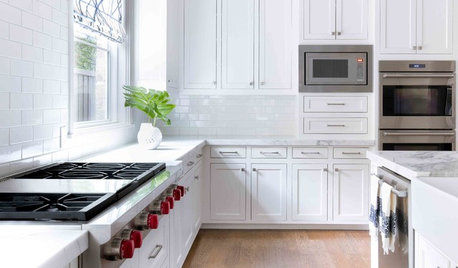
KITCHEN APPLIANCES9 Places to Put the Microwave in Your Kitchen
See the pros and cons of locating your microwave above, below and beyond the counter
Full Story
MOST POPULAR7 Ways to Design Your Kitchen to Help You Lose Weight
In his new book, Slim by Design, eating-behavior expert Brian Wansink shows us how to get our kitchens working better
Full Story
MOST POPULAREasy Green: 23 Ways to Reduce Waste at Home
Pick from this plethora of earth-friendly ideas to send less to the landfill and keep more money in your pocket
Full Story
KITCHEN DESIGNKitchen Recipes: Secret Ingredients of 5 One-of-a-Kind Cooking Spaces
Learn what went into these cooks’ kitchens — and what comes out of them
Full Story
FRONT YARD IDEAS10 Ideas for a Front-Yard Edible Garden Your Neighbors Will Love
Choosing attractive, well-mannered plants and sharing the bounty will go a long way toward keeping the peace
Full Story
KITCHEN DESIGN16 Practical Ideas to Borrow From Professional Kitchens
Restaurant kitchens are designed to function efficiently and safely. Why not adopt some of their tricks in your own home?
Full Story
HOUSEKEEPING20 Things You Might Be Forgetting to Spring-Clean
Clean these often-neglected areas and your house will look and feel better
Full Story
GREEN BUILDINGThe Big Freeze: Inventors Break New Ground to Keep Things Cool
Old-fashioned fridges can be energy guzzlers, but there are more eco-friendly ways of keeping food fresh, as these global innovations show
Full Story
BATHROOM DESIGNHow to Choose the Right Bathroom Sink
Learn the differences among eight styles of bathroom sinks, and find the perfect one for your space
Full Story
PETSDealing With Pet Messes: An Animal Lover's Story
Cat and dog hair, tracked-in mud, scratched floors ... see how one pet guardian learned to cope and to focus on the love
Full Story


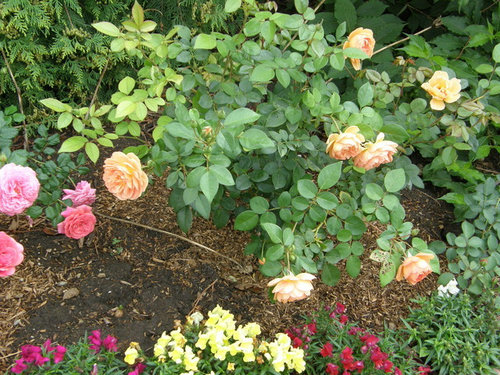
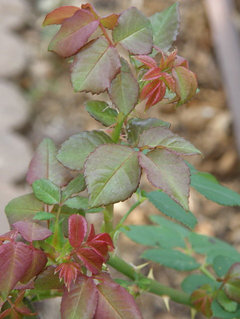


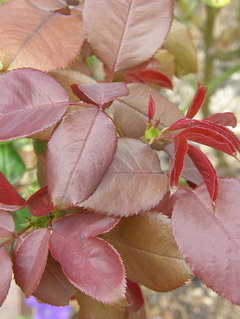
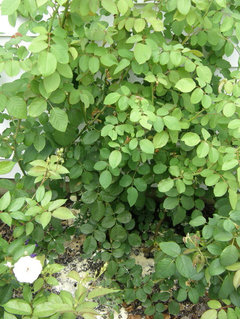
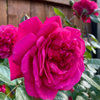
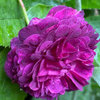

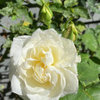
jc_7a_MiddleTN